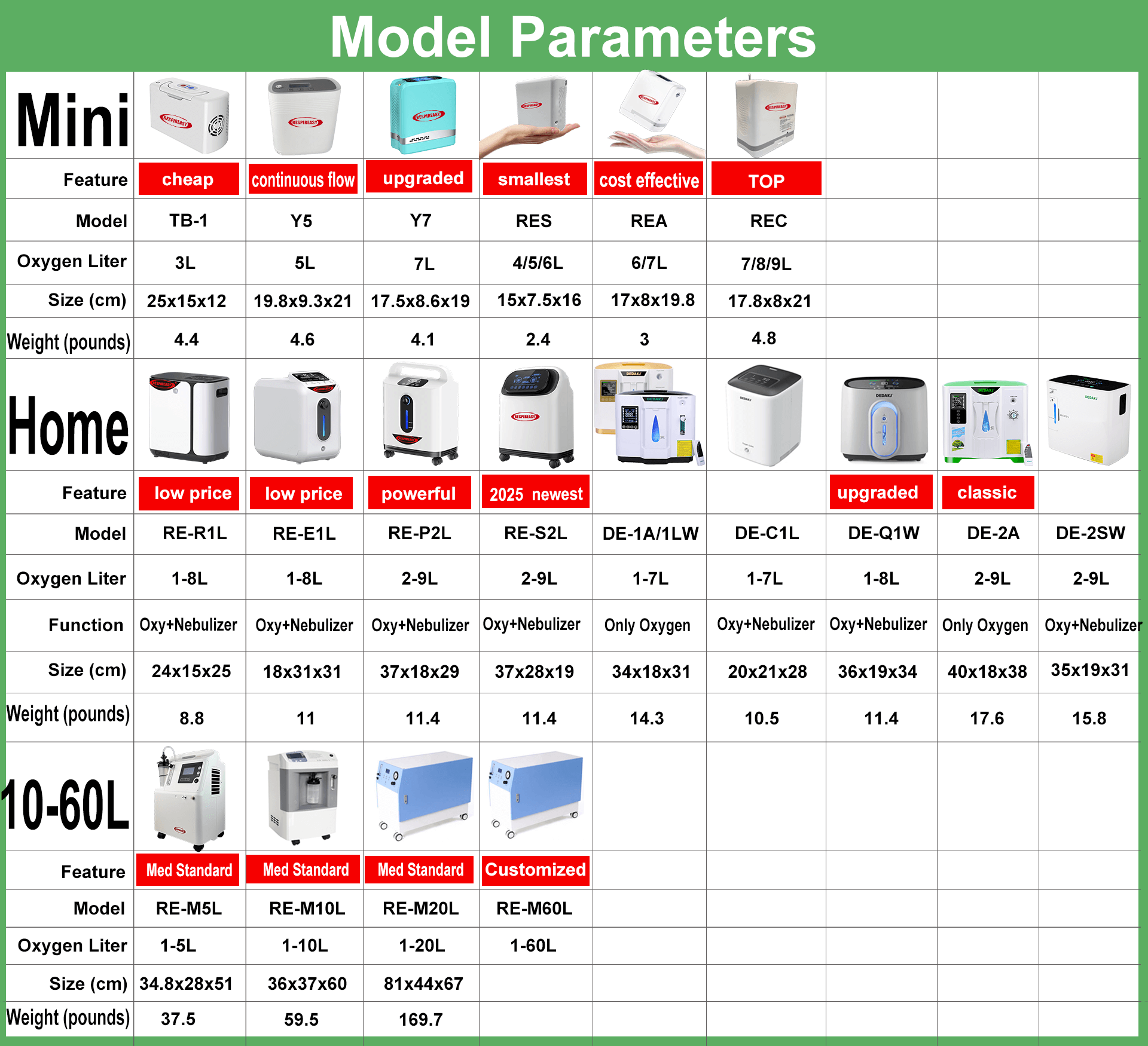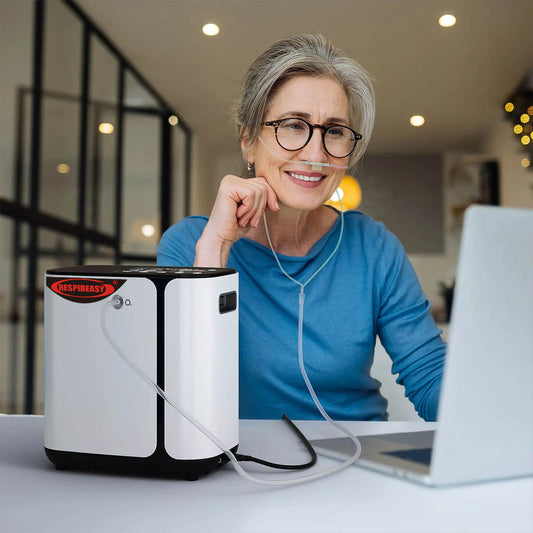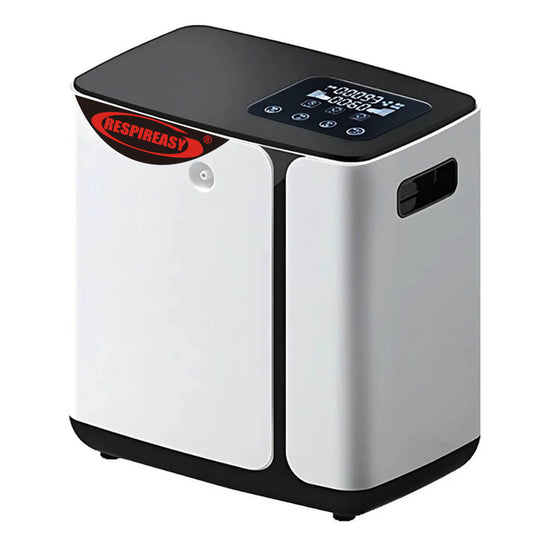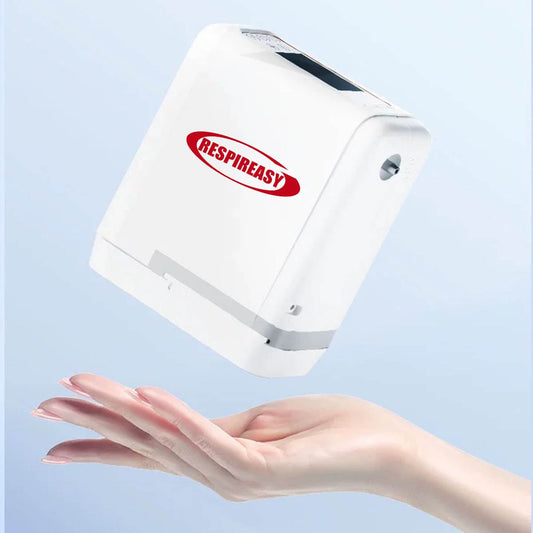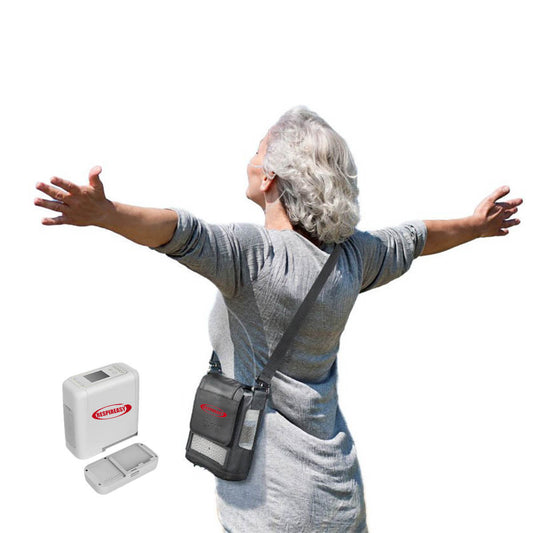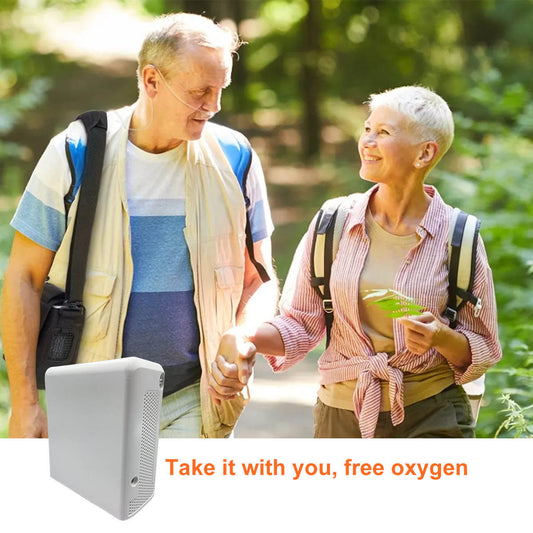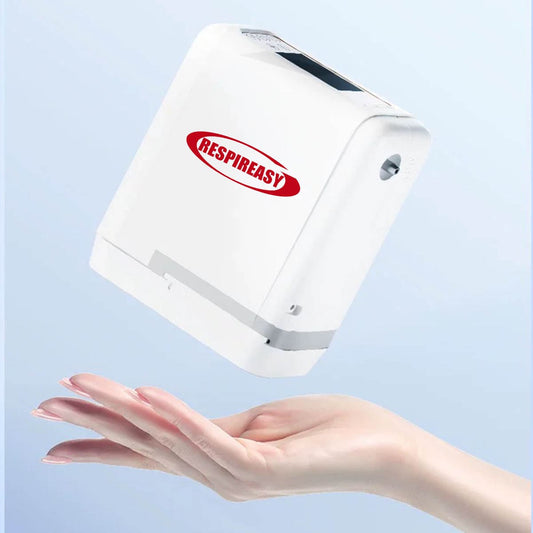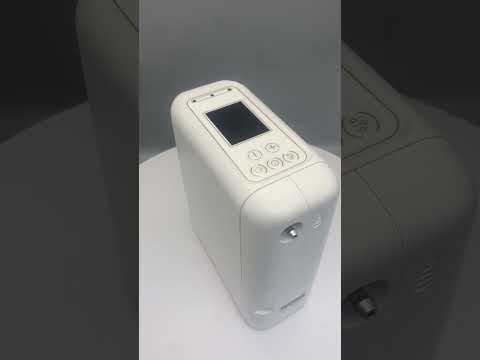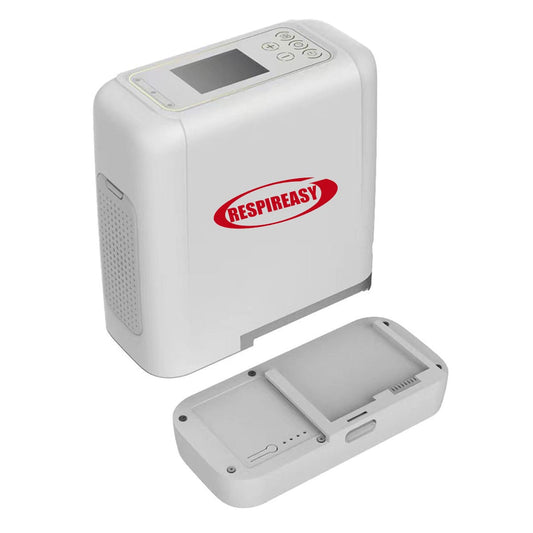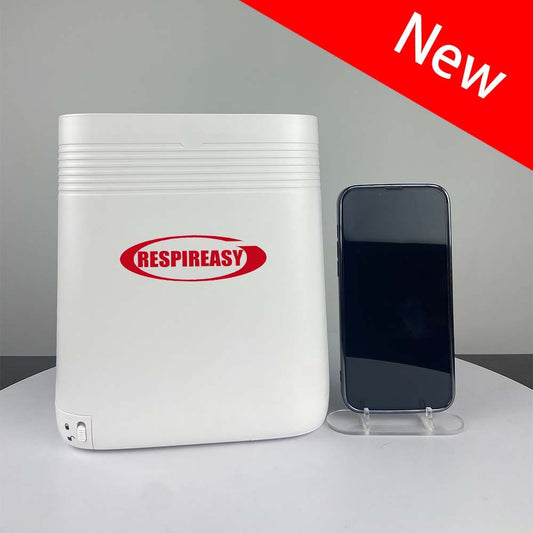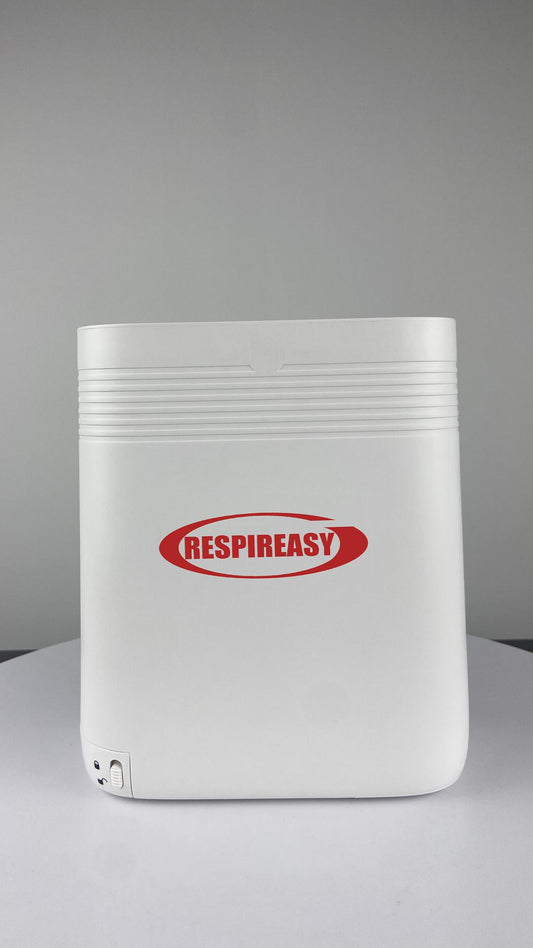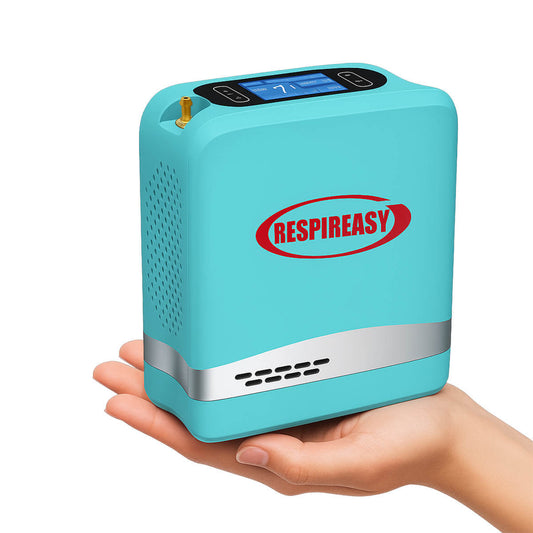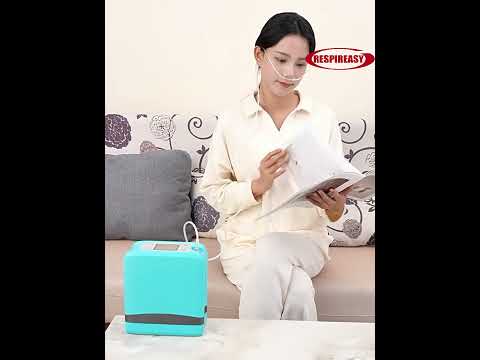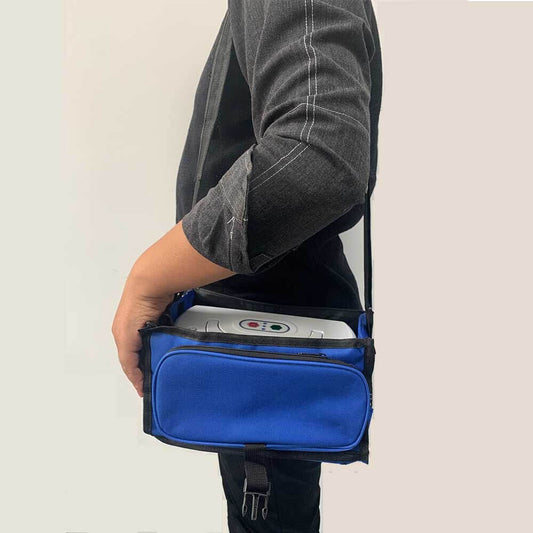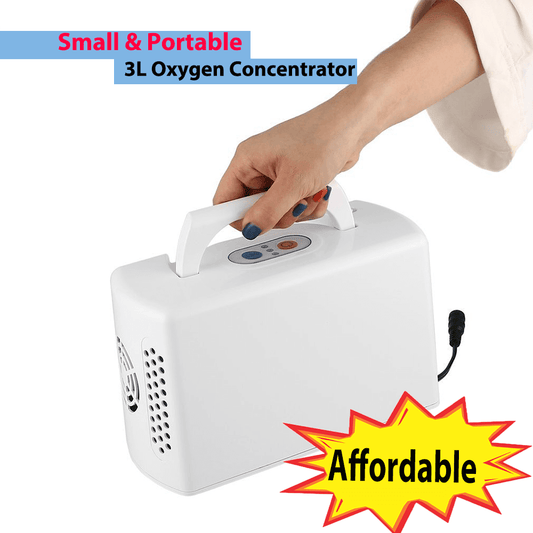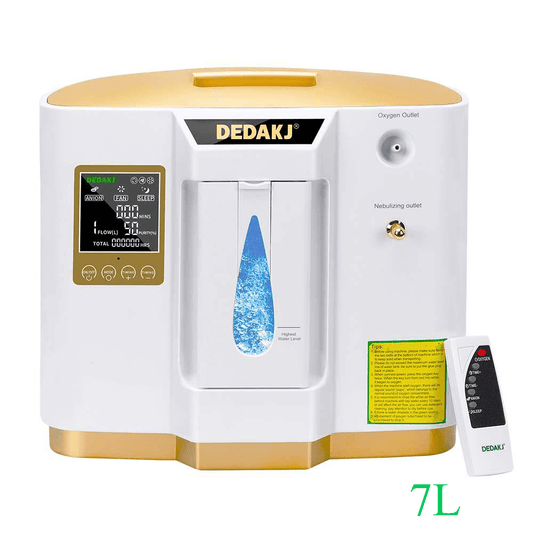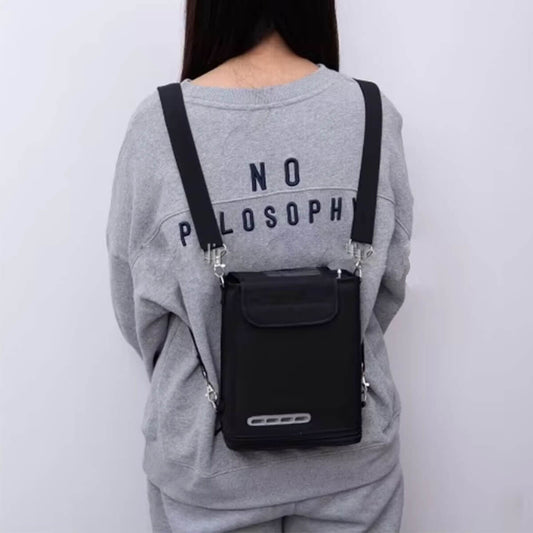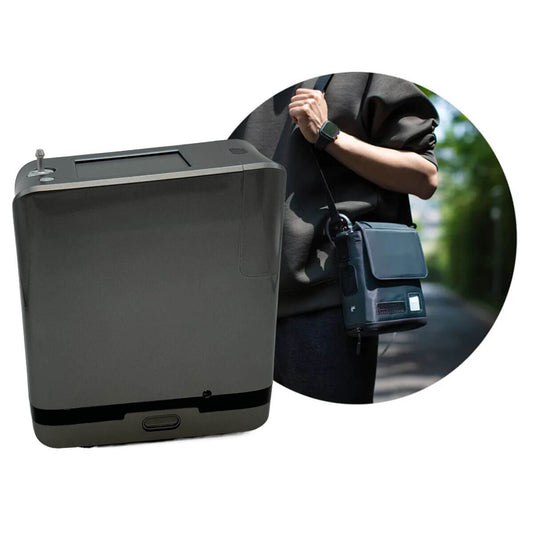When doing oxygen therapy at home, you must pay attention to these points!
Oxygen therapy can improve the oxygen supply to hypoxic tissues and ensure the progress of cell metabolism. Hyperbaric oxygen therapy and emergency oxygen therapy are mostly completed in hospitals. In recent years, more and more patients have received home oxygen therapy, and oxygen cylinders and oxygen concentrators are widely used in patients' homes. It is worth noting that excessive oxygen administration is harmful, and the harm of high oxygen is also called "oxygen toxicity". Oxygen therapy is a medical behavior. Like drug treatment, you need to follow the doctor's advice and follow the diagnosis and treatment standards.

1. What situations require home oxygen therapy?
1. Chronic lung disease: For example, patients with chronic obstructive pulmonary disease (COPD), interstitial lung disease, cystic fibrosis, and pulmonary hypertension.
2. Chronic heart failure: Especially patients with progressive or end-stage heart failure.
3. Neuromuscular and chest wall diseases: Patients with respiratory failure and non-invasive ventilator treatment cannot correct hypoxia.
4. Patients with cancer or end-stage cardiopulmonary disease with intractable dyspnea.
5. Some chronic disease patients do not have hypoxia at rest, but experience wheezing and hypoxia during activities.
6,Migraine patients can promptly relieve symptoms with home oxygen therapy.
Tips:
Q: What is severe hypoxemia?
A: Severe hypoxemia is defined as: arterial oxygen partial pressure ≤55 mmHg (pulse oxygen saturation ≤88%) when breathing room air at standard atmospheric pressure; or moderate hypoxemia accompanied by limb edema, increased red blood cells (hematocrit ≥55%) or pulmonary hypertension.
Moderate hypoxemia is defined as: arterial oxygen partial pressure = 56-59 mmHg (pulse oxygen saturation in the range of 89%-93%) when breathing room air at standard atmospheric pressure.
Note: ① Oxygen therapy is only suitable for patients with hypoxia and cannot solve the treatment problem of patients with non-hypoxic dyspnea; ② Long-term oxygen therapy is generally not recommended for patients with no hypoxia or only mild hypoxia (pulse oxygen saturation>93%); ③ The criteria for determining hypoxemia are based on the arterial oxygen partial pressure in the "blood gas analysis" examination. There are many factors affecting the pulse oxygen saturation measured by the pulse oximeter, which is only for clinical reference.
2. Precautions for home oxygen therapy?

Ensure the safety of oxygen use
Oxygen is a safe, non-flammable gas, but it can help combustion. In the presence of oxygen, some materials are very easy to catch fire and burn. Home oxygen therapy should be kept away from heat sources and open flames (at least 10 meters), smoking is strictly prohibited, and gas and heating appliances should be used with caution at the same time; avoid using or placing alcohol-containing items (such as air fresheners and hairspray) near oxygen devices; oxygen should be turned off in time when oxygen inhalation is stopped; smoke detectors should be installed at home and fire extinguishers should be prepared to prevent emergencies such as fires.
Pay attention to adverse reactions
The adverse reactions of oxygen therapy mainly include dryness or bleeding of the nasal mucosa, skin pressure or irritation around the mask or nasal cannula, inhalation atelectasis, hypercapnia and respiratory depression, oxygen poisoning, etc.
3. What are the methods of home oxygen therapy?

Long-term oxygen therapy (LTOT)
It is suitable for patients with chronic cardiopulmonary diseases and severe hypoxemia, and oxygen therapy should be performed for at least 15 hours a day. Starting from 1 liter/min oxygen flow, increase until the patient's pulse oxygen saturation is >90%. At this time, blood gas analysis can be considered to confirm that the target of arterial oxygen partial pressure ≥60mmHg at rest is achieved.

Mobile oxygen therapy (AOT)
It is suitable for patients who do not have hypoxia at rest but have hypoxia during exercise. Use portable oxygen devices to supplement oxygen during exercise and daily activities.
Nocturnal oxygen therapy (NOT)
Oxygen is only supplied at night, not during the day, and is suitable for patients with hypoxemia during sleep. Patients with respiratory failure should also consider non-invasive ventilator therapy.

Palliative oxygen therapy (POT)
It is suitable for patients with advanced cancer or terminal cardiopulmonary diseases to use oxygen to relieve intractable dyspnea.
Short pulse oxygen therapy (SBOT)
Refers to short-term (generally 10-20 minutes) intermittent oxygen therapy before and after exercise.
IV. What are the devices for home oxygen therapy?
Oxygen supply equipment
Common sources of oxygen for home oxygen therapy are medical oxygen cylinders, oxygen concentrators and liquid oxygen systems, which are divided into fixed and portable types according to whether they can be carried with you.
① Medical oxygen cylinder: stores compressed medical oxygen, and the cylinder is connected to a pressure valve and a flow meter to observe the remaining gas volume and adjust the oxygen flow. 10-liter oxygen cylinders are most commonly used for home oxygen therapy, while 1-liter and 4-liter oxygen cylinders are often used for portable use.
Tips:
Q: How much oxygen can a medical oxygen cylinder store?
A: The general calculation formula is, oxygen content (liter) = oxygen cylinder volume (liter) × 145. For example: A 10-liter oxygen cylinder can store 10×145=1450 liters of oxygen.
Illustration: Portable medical oxygen cylinder.

② Oxygen concentrator: Most of them are oxygen concentrators. 1) Filtration: Through physical methods such as zeolite molecular sieves and pressure swing adsorption technology, dust, bacteria and other particles in the air inhaled by the oxygen concentrator are filtered. 2) Concentration: The oxygen concentrator forces air into a cylinder containing "molecular sieve" or "semi-permeable membrane" materials, where nitrogen is absorbed, leaving oxygen concentrated and purified, and finally medical-grade oxygen is delivered to the patient through a continuous or pulsed dose delivery system.
The output of the oxygen concentrator is usually measured in "liters/minute". Low-flow oxygen concentrators can deliver an oxygen flow rate of 0.5-5 liters/minute; high-flow oxygen concentrators can deliver an oxygen flow rate of 10-15 liters/minute. Oxygen concentrators can also be divided into fixed and portable types, and portable oxygen concentrators are powered by built-in rechargeable batteries.
Illustration: Portable oxygen concentrator (above) and fixed oxygen concentrator (below).


Oxygen delivery
It is divided into low-flow system and high-flow system. Low-flow oxygen delivery system is mostly used for home oxygen therapy, including nasal cannula, simple mask, non-rebreathing mask, etc.
① Nasal cannula: the most commonly used, generally set 1-6 liters/minute oxygen flow (oxygen concentration 25-45%), if the oxygen flow> 6 L/min, the high-speed oxygen flow has a great impact on the nasal mucosa, it is recommended to use a simple mask to breathe oxygen. Nasal cannula oxygen inhalation can be used for talking and eating at the same time, but it is easy to shift, especially for patients with deviated nasal septum or nasal polyps. It is recommended to choose nasal plug or nasal cannula.
② Simple mask: generally set 5-10 liters/minute oxygen flow, oxygen is supplied through the small-diameter tube at the bottom of the mask, and carbon dioxide is exhaled through the side holes on both sides of the mask. Indoor air also enters the mask through the side holes and mixes with oxygen, so the oxygen flow> 5 liters/minute is required to prevent carbon dioxide from being inhaled again. Mask oxygen inhalation may restrict patients from eating and drinking, and even feel claustrophobic.
③Non-rebreathing mask: The one-way valve between the mask and the air bag prevents exhaled air from entering. The air bag can deliver high-concentration oxygen, generally set at 10-15 liters/minute (oxygen concentration 80-95%). If the oxygen flow rate is <10 liters/minute, the air bag will collapse during inhalation. It is suitable for patients with severe hypoxia who breathe well, but if the patient vomits, there will be a risk of carbon dioxide retention and aspiration.
Illustration: nasal cannula (left), simple mask (middle) and non-rebreathing mask (right).

Tips
Q: How to convert oxygen flow rate and oxygen concentration?
A: The general estimation formula is, oxygen concentration (%) = 21 + 4 × oxygen flow rate (liters/minute), that is, every increase of 1 liter/minute of oxygen flow rate can increase the oxygen concentration by 4%. But it is only applicable to nasal cannula or nasal congestion oxygen inhalation. If it is replaced with mask oxygen inhalation, the estimation formula is not valid. When breathing oxygen through a mask, the oxygen concentration is generally between 35% and 55%, which depends on the patient's inhalation flow, respiratory rate, mask fit, and oxygen flow. Therefore, different oxygen supply equipment and oxygen delivery devices should be selected under the guidance of a doctor.
5. How to maintain oxygen therapy equipment?
1. It is recommended to clean the nasal cannula or mask once a day, dry it after cleaning and keep it for later use, and replace it every 2-4 weeks; it needs to be cleaned frequently during illness and replaced in time to prevent cross infection.
2. It is recommended to clean the humidifier bottle every 3 days, wash it, air dry it, and refill it with distilled water.
3. It is recommended to clean or replace the air filter once a month, soak it for disinfection, rinse it with running water, dry it and keep it for later use.
4. It is recommended to replace the gas pipeline every 2 months, wipe the surface of the machine with a clean, slightly damp soft cloth, and regularly maintain the equipment and its supporting devices every year.
5. Keep air circulation in the oxygen therapy room. Oxygen cylinders should be placed upright when in use. Oxygen generators should be placed on a stable ground. Fire, heat, dust and moisture should be prevented.
6, Most important is to replace the oxygen filters in time.
The filter is very important to us and to the machine, to help us inhale the clean oxygen and protect us from potential infection, and to keep the machine running properly, to extend its lifespan. So the filter should be replaced every 2-4 months.
VI. How to manage home oxygen therapy?
1. Set the oxygen supply method, oxygen flow rate and oxygen supply target according to the doctor's oxygen therapy prescription.
2. During oxygen therapy, the home must be equipped with a pulse oximeter. After oxygen inhalation, observe the changes in pulse oxygen saturation and adjust the oxygen flow rate in time.
3. It is recommended to conduct the first outpatient follow-up 3 months after the start of long-term home oxygen therapy, and another outpatient follow-up 6-12 months after the first follow-up to evaluate whether oxygen therapy needs to be continued.
4. Oxygen should be regarded as a medicine, learn about oxygen therapy, and use and maintain oxygen therapy equipment correctly.

TOP oxygen concentrator supplier,reliable product and service
DEDAKJ oxygen concentrator manufacturer provides various models of 1-9L home oxygen concentrators, up to 20LPM medical oxygen concentrators as well as the 2 lbs lightweight portable oxygen concentrator for traveling.
This is top-rated DEDAKJ oxygen concentrator supplier, providing both DEDAKJ 10- 20 liter medical oxygen concentrators and 1-9 liters home oxygen breathing machines, and DEDAKJ oxygen accessories parts.
For more information on oxygen concentrators, please feel free to consult us.
And you are we welcome to place the order in our official store directly.
We are operating the USA, Europe, Mexico and UK local warehouses.
Usually you can receive the parcel within 3-6 days,very fast shipping time.
More important, as the honorable oxygen concentrator supplier, we can offer 1 year quality warranty to our customers!






















